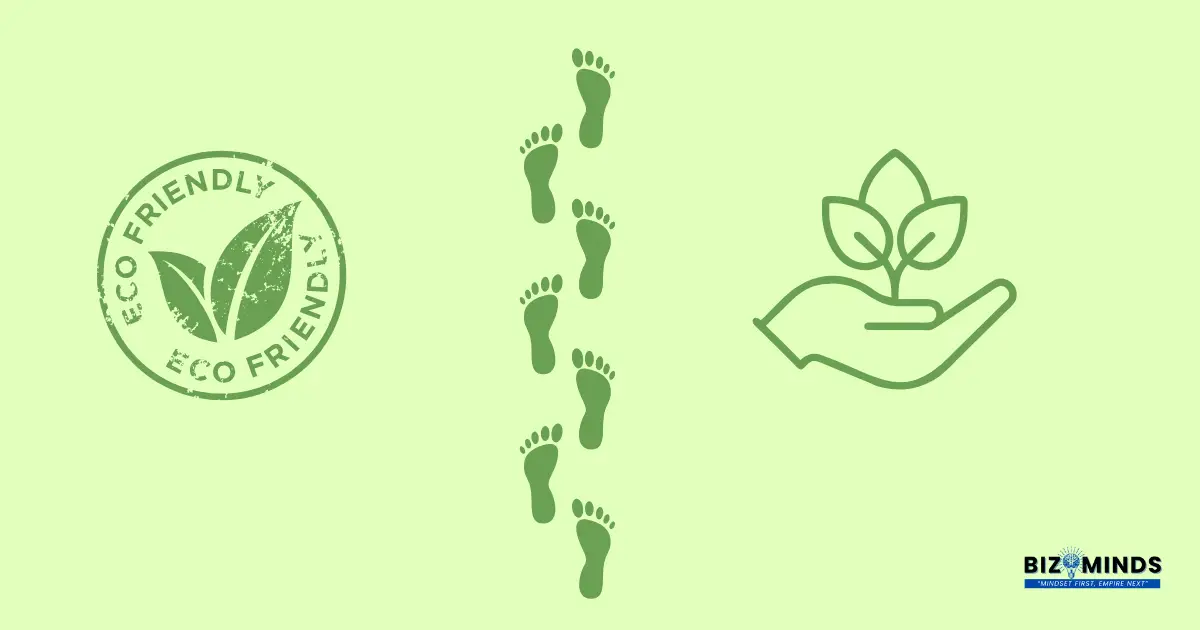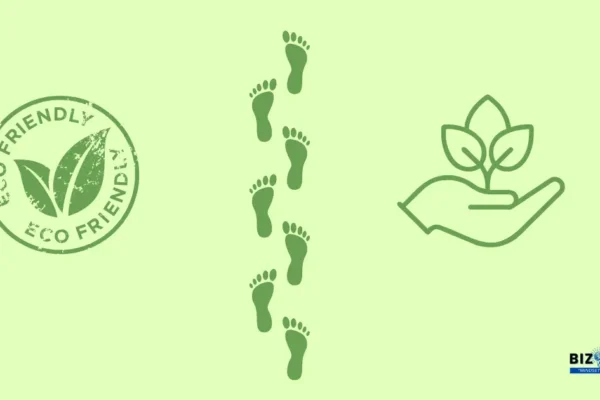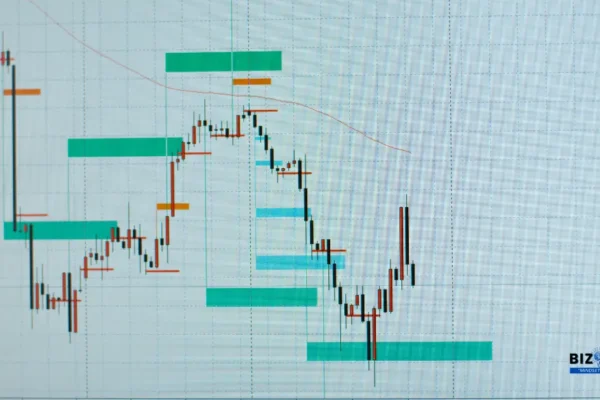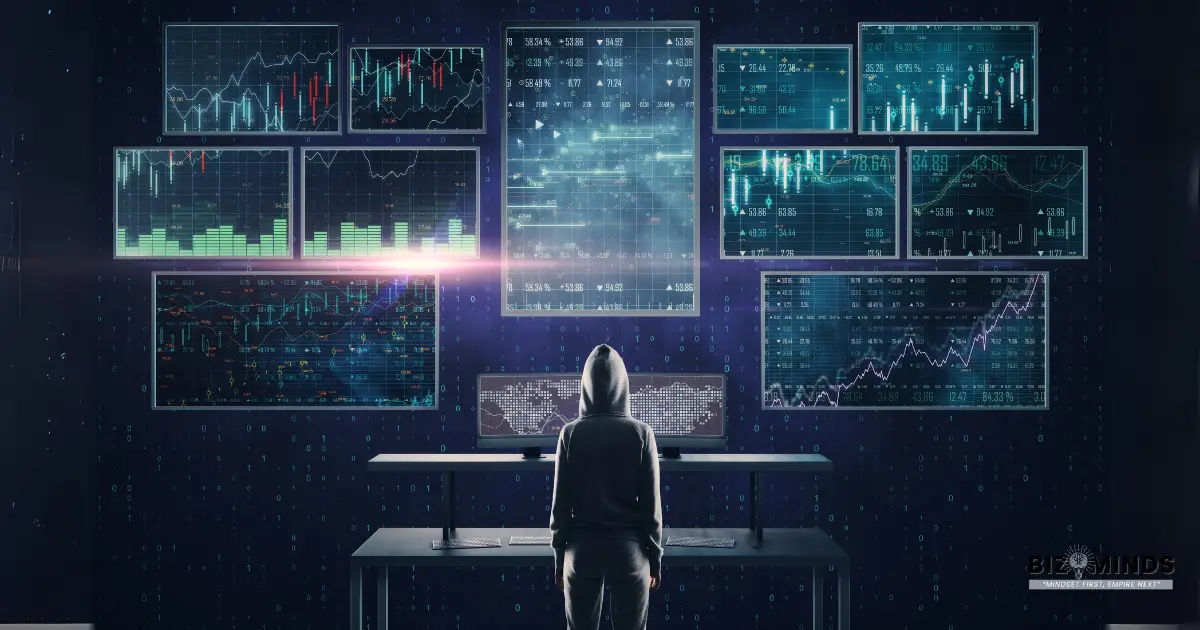

The American dream is evolving. Where once entrepreneurs chased profit at any cost, today’s visionary founders are building businesses that heal the planet while generating remarkable returns. Welcome to the age of eco-conscious product startups, where environmental stewardship intersects with innovative entrepreneurship to drive success in the rapidly expanding circular economy. These startups are pioneering sustainable business models that prioritize reducing waste, reusing resources, and regenerating materials, creating not only profitable opportunities but also contributing to a healthier planet. As consumer demand for greener solutions grows, this era marks a powerful shift where responsible innovation and economic growth go hand in hand, fueling a vibrant ecosystem of businesses committed to sustainability and long-term impact.
Nearly half of Americans now purchase eco-friendly products monthly, with demand surging 6% since 2024. This isn’t just a trend—it’s a fundamental shift toward conscious consumption that represents a $382.6 billion market opportunity in 2025, projected to reach $692 billion by 2033. The message couldn’t be clearer: embracing sustainable business practices not only helps protect the environment but also delivers exceptional financial benefits. Companies integrating sustainability into their core strategies report higher profitability, stronger brand loyalty, and increased investor confidence. With growing consumer demand for eco-friendly products and regulatory pressures mounting, sustainability has become a crucial driver of long-term business success, enhancing operational efficiency while boosting the bottom line.

US Eco-Friendly Products Market Growth (2020-2033)
Understanding the Circular Economy Revolution for Eco-Friendly Product Development
The circular economy represents a complete reimagining of how we create, use, and dispose of products. Unlike the traditional “take-make-dispose” linear model that has dominated American industry for decades, the circular approach designs out waste from the beginning, keeps materials in continuous use, and regenerates natural systems.
Think of it as nature’s business model. In forests, nothing goes to waste—fallen leaves become soil nutrients, which feed new growth. Circular economy startups apply this same principle to business, creating closed-loop systems where one company’s waste becomes another’s raw material.
Why the Circular Economy Matters for Eco-Friendly Product Innovation
Climate change concerns are driving unprecedented consumer behavior shifts. American consumers increasingly recognize that their purchasing decisions directly impact environmental outcomes. This awareness translates into real market demand—products making environmental claims averaged 28% cumulative growth over five years, compared to just 20% for conventional products.
The statistics tell a compelling story:
- 78% of US consumers prioritize sustainable lifestyles
- Products featuring sustainability claims were responsible for 56% of overall growth across their categories, highlighting the strong market shift toward eco-friendly options.
- 74% of American consumers are willing to pay a premium for products packaged in sustainable materials, demonstrating the increasing value shoppers place on environmentally conscious packaging
- Environmental impact has returned to pre-COVID importance levels for 44% of consumers

US Consumer Attitudes toward Eco-Friendly Product (2025)
Market Research and Opportunity Assessment for Eco-Friendly Product Startups
Before launching your eco-friendly product startup, understanding market dynamics becomes crucial for success. The sustainable products landscape offers diverse opportunities across multiple sectors, each with unique consumer needs and growth trajectories.
Identifying High-Growth Sectors for Eco-Friendly Product Development
Food and beverage sustainability leads market growth, with 11 out of 15 categories showing accelerated adoption of eco-friendly products. Personal care follows closely, with three out of four categories demonstrating strong sustainable product performance. However, beverage categories show more modest adoption, suggesting opportunities for innovative approaches.
Consumer demographics reveal interesting patterns. Higher-income households, urban and suburban residents, and families with children drive sustainable product adoption, yet the appeal extends broadly across demographic groups with only 15% variation. This broad appeal suggests eco-friendly product startups can target mainstream markets rather than niche audiences.
Competitive Landscape Analysis in the Eco-Friendly Product Market
The current startup ecosystem shows remarkable diversity and innovation. Companies like Aurora Solar revolutionized solar panel design software, while Grove Collaborative built a sustainable consumer products empire that achieved public trading status.
Us Eco Friendly Startups
| Company | Location | Founded | Sector | Funding_Status | Key_Achievement |
| Aurora Solar | San Francisco, CA | 2013 | Solar Energy Software | Series C | Principal solar design software |
| Grove Collaborative | San Francisco, CA | 2016 | Sustainable Consumer Products | Public (NYSE: GROV) | 100% plastic-free by 2025 goal |
| Biome Makers | Davis, CA | 2015 | Soil Health Analytics | Series A | Soil health restoration |
| EcoCart | San Francisco, CA | 2019 | Carbon Offsetting | Series A | 4M lbs CO2 offset |
| Bluebird Climate | New York, NY | 2020 | Sustainability Analytics | Seed | Consumer brand analytics |
| Heliogen | Pasadena, CA | 2019 | Renewable Energy | Series B | Carbon-negative fuel production |
| FuelGems | Austin, TX | 2018 | Fuel Additives | Bootstrapped | Emission reduction additive |
| Encamp | Indianapolis, IN | 2017 | Environmental Compliance | Series A | Digital compliance platform |
| 4Ocean | United States | 2017 | Ocean Cleanup | Unknown | 35M lbs ocean trash removed |
| Brimstone | United States | 2019 | Carbon-Free Cement | Series A + Grant | 60% cement emission reduction |
| Solugen | United States | 2016 | Bio-based Chemicals | Unicorn ($2B+) | 90 kilotons CO2 avoided |
| C+UP | Chicago, IL | 2023 | Carbon Upcycling | Early Stage | Industrial CO2 to fuel |
| MacroCycle Technologies | Cambridge, MA | 2023 | Plastic Recycling | Early Stage | Virgin-grade plastic recycling |
These success stories demonstrate various paths to market leadership. Some focus on B2B solutions (Aurora Solar’s software for solar installers), others on direct consumer products (Grove Collaborative’s household items), while companies like 4Ocean created unique business models combining product sales with environmental cleanup services.
Developing Your Circular Business Model
Creating a successful eco-friendly product startup requires more than good intentions—it demands a robust business model that generates profit while delivering environmental benefits. The Circular Business Model Canvas provides a framework for designing sustainable ventures that create value for all stakeholders.
Core Value Propositions for Eco-Friendly Product Startups
Successful circular startups typically offer one or more of these value propositions:
- Extended Product Lifecycles: Products designed for durability, repairability, and upgradability
- Resource Efficiency: Solutions that dramatically reduce material and energy consumption
- Waste Elimination: Systems that convert waste streams into valuable inputs
- Service-Based Models: Product-as-a-service offerings that retain ownership and responsibility
Revenue Model Innovation
Traditional one-time sales models often conflict with circular principles. Innovative revenue approaches include:
Subscription and Leasing Models: Companies retain product ownership, ensuring proper end-of-life management while generating recurring revenue. This model works particularly well for electronics, appliances, and industrial equipment.
Take-Back Programs:
Manufacturers buy back used products for refurbishment or material recovery. Jackalo, America’s first circular children’s clothing brand, exemplifies this approach by purchasing outgrown clothes for renewal and resale.
Performance-Based Contracts:
Revenue tied to environmental or performance outcomes rather than product volume. This aligns business incentives with sustainability goals.
Multi-Sided Platforms:
Connecting multiple stakeholders in circular value chains. BitcoinCan created a recycling platform that benefits consumers, businesses, and the broader circular economy while facilitating Bitcoin payments.
Product Development Strategy for for Sustainable Eco-Friendly Product Creation
Designing eco-friendly products requires fundamentally different thinking than conventional product development. Every decision—from material selection to end-of-life planning—must consider environmental impact alongside functionality and cost.
Sustainable Design Principles for Eco-Friendly Product Development
Design for Durability:
Products should withstand extended use without degradation. This reduces replacement frequency and total environmental impact. Biome Makers exemplifies this approach with robust soil testing equipment designed for harsh agricultural environments.
Modularity and Upgradability:
Product components should be designed for easy replacement or upgrading, allowing users to enhance or repair individual parts without needing to discard the entire product. This extends product lifecycles and reduces waste generation.
Material Selection:
Prioritize bio-based, recycled, or renewable materials with lower environmental footprints. MacroCycle Technologies demonstrates innovation in this area by recycling plastic waste into virgin-grade materials using less energy than conventional processes.
End-of-Life Planning:
Design products for easy disassembly, component recovery, and material recycling. This closing-the-loop thinking differentiates circular products from conventional alternatives.
Development Process Integration for Successful Eco-Friendly Product Launch
Sustainable product development involves incorporating environmental considerations at every stage of the development process, ensuring that eco-friendly practices and materials are prioritized from initial design through production, use, and end-of-life management:
- Ideation with Impact: Generate concepts that solve environmental problems while meeting market needs
- Lifecycle Assessment: Evaluate environmental impacts from raw material extraction through end-of-life
- Sustainable Sourcing: Establish supply chains that prioritize environmental and social responsibility
- Prototype Optimization: Test and refine designs for minimal environmental impact
- Manufacturing Efficiency: Optimize production processes for waste reduction and energy efficiency
- Distribution Strategy: Design packaging and logistics systems that minimize environmental impact
Funding and Investment Strategies
The investment landscape for eco-friendly product startups has transformed dramatically. Circular economy investments reached $164 billion between 2018 and 2023, with funding growing from $10 billion in 2018 to $28 billion in 2023. While the peak of $42 billion in 2021 hasn’t been sustained, investor appetite for sustainable solutions remains strong.

Global Circular Economy Investment Trends (2018-2023)
Government Funding Opportunities for Eco-Friendly Product Businesses
The U.S. government provides substantial support for sustainable businesses through various programs:
Federal Grants and Programs:
- The EPA, through the Bipartisan Infrastructure Law, has allocated $275 million specifically to enhance recycling infrastructure across the United States, supporting waste management improvements and advancing the circular economy
- Department of Energy (DOE) grants for clean energy and sustainable practices
- Small Business Innovation Research (SBIR) program funding for environmental technology innovation
- Economic Development Administration (EDA) “Build to Scale” initiative for technology-driven businesses
Tax Incentives and Credits:
- Modified Accelerated Cost Recovery System (MACRS) for equipment depreciation
- Section 179 Deduction for business equipment purchases
- Energy Efficient Commercial Buildings Deduction (Section 179D)
- Renewable Energy Tax Credits for solar, wind, and energy-efficient systems
Private Investment Sources for Eco-Friendly Product Innovation
Venture Capital and Private Equity: Specialized funds focus increasingly on circular economy investments. BlackRock’s Circular Economy Fund exemplifies institutional commitment to sustainable investing. However, high-impact solutions in design and production receive only 4.7% of all circular economy investment, representing significant opportunity for innovative startups.
Corporate Venture Capital: Established companies invest in startups that complement their sustainability goals. Patagonia’s Tin Shed Ventures funds eco-friendly startups aligned with their environmental mission.
Impact investing: involves investors seeking not only financial returns but also measurable social and environmental benefits, providing patient capital to startups dedicated to solving environmental challenges and driving sustainable growth.
Crowdfunding and Community Investment: Platforms enable direct consumer investment in sustainable products. This approach works particularly well for consumer-facing eco-friendly products with strong brand stories.
Alternative Funding Models
Accelerators and Incubators: Specialized programs support circular economy startups with funding, mentorship, and networks. Techstars and other major accelerators now offer sustainability-focused tracks.
Green Bonds: These debt instruments finance environmental projects at attractive interest rates. While typically available to larger companies, some programs serve smaller businesses.
Revenue-Based Financing: allows investors to provide capital in exchange for a share of future revenues rather than equity stakes. This funding approach is particularly well-suited for sustainable businesses focused on creating long-term value, as it aligns investor returns with the company’s ongoing revenue growth.
Regulatory and Compliance Framework for Eco-Friendly Product Startups
Understanding the regulatory environment is crucial for eco-friendly product startups. While regulations can seem daunting, they often create competitive advantages for sustainable businesses and barriers for less responsible competitors.
Current Regulatory Landscape for Eco-Friendly Product Manufacturing
Environmental regulations continue evolving at federal, state, and local levels. Key areas include:
Product Safety and Environmental Standards:
Products must meet safety requirements and environmental certifications. Third-party certifications like B Corp, Cradle to Cradle, and ENERGY STAR provide credibility and market access.
Packaging and Waste Regulations:
Many states implement extended producer responsibility laws requiring manufacturers to manage product end-of-life. California and other states lead in packaging waste reduction requirements.
Chemical Safety:
TSCA (Toxic Substances Control Act) and state chemical disclosure laws affect product formulations and manufacturing processes.
Carbon Reporting:
While not yet mandatory for smaller companies, carbon footprint disclosure requirements are expanding. Proactive measurement and reporting create competitive advantages.
Compliance as Competitive Advantage
Progressive startups treat regulatory compliance not as a challenge, but as a strategic chance. Encamp has successfully created a digital platform that helps businesses efficiently handle environmental compliance. By anticipating and meeting regulatory demands early, startups can minimize risks, streamline their operations, and stay ahead of the competition:
- Build trust with environmentally conscious consumers
- Access markets requiring certifications
- Reduce future compliance costs
- Create barriers for less responsible competitors
Marketing and Brand Strategy for Eco-Friendly Products
Building an authentic sustainable brand requires more than environmental claims—it demands transparent communication, genuine impact, and emotional connection with values-driven consumers. The rise of “greenwashing” skepticism means consumers scrutinize environmental claims more carefully than ever.
Authentic Sustainability Messaging
Transparency Over Perfection:
Consumers respect honesty about environmental challenges and improvement efforts. Companies that acknowledge limitations while demonstrating continuous improvement build stronger trust than those claiming perfection.
Measurable Impact:
Quantify environmental benefits with specific metrics. 4Ocean’s “35 million pounds of trash removed” provides concrete evidence of impact that resonates with supporters.
Third-Party Validation:
Certifications from respected organizations provide credibility. B Corp certification, Climate Neutral certification, and 1% for the Planet membership signal genuine commitment.
Storytelling with Purpose:
Connect environmental benefits to human stories and emotions. Pela’s mission to “prevent 1 billion pounds of plastic waste” creates an aspirational narrative that motivates action.
Digital Marketing Strategies
Content Marketing:
Educational content about sustainability issues builds authority and attracts environmentally conscious consumers. This approach works particularly well for complex topics like circular economy principles.
Social Media Engagement:
Platforms provide direct communication channels with sustainability-focused communities. User-generated content showcasing products in action creates authentic endorsements.
Influencer Partnerships:
Collaborations with environmental advocates and lifestyle influencers expand reach within target demographics. Authenticity matters more than follower count for sustainable brands.
SEO and Online Visibility:
Optimize content for sustainability-related search terms. Many consumers research environmental claims before purchasing, making search visibility crucial.
Operations and Supply Chain Management for Eco-Friendly Product Companies
Sustainable operations require rethinking traditional business processes to minimize environmental impact while maintaining efficiency and profitability. This involves everything from facility design to supplier selection to waste management.
Sustainable Operations Setup Eco-Friendly Product Manufacturing
Energy Efficiency: Implement renewable energy sources, efficient lighting, and smart systems to reduce energy consumption. New Belgium Brewing earned the distinguished Platinum Zero Waste Business Certification by successfully diverting 99.9% of its waste from landfills, demonstrating a strong commitment to sustainable waste management and environmental stewardship.
Waste Reduction: Design processes that minimize waste generation and maximize material utilization. Green Steel Environmental demonstrates this approach by using industrial waste products to improve natural gas processing and wastewater treatment.
Water Conservation: Implement water-efficient processes and recycling systems. This reduces environmental impact and operating costs while preparing for potential water scarcity.
Transportation Optimization: Design logistics networks that minimize transportation distances and emissions. This encompasses choosing suppliers, deciding on facility locations, and planning effective distribution strategies.
Circular Supply Chain Design for Eco-Friendly Product Distribution
Traditional linear supply chains end at product disposal. Circular supply chains establish closed-loop systems where materials are continuously reused, recycled, and circulated, minimizing waste and maximizing resource efficiency:
Supplier Partnerships: Work with suppliers committed to sustainability. Hamilton Perkins Collection is pioneering sustainable fashion by transforming waste materials such as PVC, recycled plastic bottles, pineapple leaf fibers, and billboard vinyl into luxurious, eco-friendly fashion fabrics. Their innovative approach provides Fortune 500 companies with high-quality, upcycled materials that support both environmental responsibility and stylish design. By utilizing difficult-to-recycle materials and employing rigorous life cycle assessments, Hamilton Perkins not only reduces landfill waste but also sets new standards for circular fashion and sustainability within the industry. Their commitment extends beyond product creation to fostering a culture of conscious consumption and inspiring businesses and consumers alike to embrace eco-innovative solutions for a greener future.
Material Traceability: Track materials throughout their lifecycle to ensure responsible sourcing and enable end-of-life recovery.
Reverse Logistics: Develop systems for product take-back, refurbishment, and material recovery. Circular supply chains require infrastructure and processes that differ significantly from traditional forward logistics, focusing on reverse flows, product return management, and material recovery to enable continuous reuse and resource regeneration.
Collaboration Networks: Partner with other companies to share resources and create industrial symbiosis where one company’s waste becomes another’s input.
Technology Integration and Innovation
Technology plays a crucial role in enabling circular economy business models. From artificial intelligence optimizing resource use to blockchain ensuring supply chain transparency, digital tools unlock new possibilities for sustainable business.
Emerging Technologies for Sustainability
Artificial Intelligence and Machine Learning: AI optimizes resource allocation, predicts maintenance needs, and improves process efficiency. Solugen uses AI in its Bioforges to convert corn sugar into fossil fuel alternatives, earning the company unicorn status with over $2 billion valuation.
Internet of Things (IoT): Sensors monitor product performance, optimize energy use, and enable predictive maintenance. This extends product lifecycles and reduces resource consumption.
Blockchain Technology: Provides transparency and traceability throughout supply chains. This enables verification of sustainability claims and supports circular material flows.
Digital Platforms: Connect stakeholders in circular value chains. RetraCycle’s platform helps consumers find recycling options while enabling businesses to manage operations and inventory.
Innovation in Materials and Processes
Bio-based Materials: Companies develop alternatives to petroleum-based materials using renewable feedstocks. Retrn Bioworks creates advanced bioplastics for food packaging, addressing plastic pollution while maintaining product functionality.
Advanced Recycling: New technologies enable recycling of previously unrecyclable materials. MacroCycle Technologies uses innovative processes to recycle PET plastic into virgin-grade materials with lower energy consumption.
Manufacturing Innovation: Brimstone replaces limestone in cement production with calcium silicate rocks, reducing emissions by 60% while creating chemically identical products.
Scaling and Growth Strategies for Eco-Friendly Product Businesses
Growing an eco-friendly product startup requires balancing rapid expansion with sustainability principles. This involves choosing growth strategies that amplify environmental impact while building financial sustainability.
Scalability Models for Circular Startups
Impact Scalability: Growth that multiplies environmental benefits proportionally. Companies achieving this create systems where increased scale leads to greater environmental impact per unit.
Commercial Scalability: Traditional business growth metrics applied to sustainable business models. This includes revenue growth, market expansion, and profitability improvement.
Ecosystem Scalability: Growth through network effects and platform development. Successful startups often evolve into platforms connecting multiple stakeholders in circular value chains.
Institutional Scalability: Influence on industry practices and policy development. Leading startups shape industry standards and regulatory frameworks.
Partnership and Collaboration in the Eco-Friendly Product Ecosystem
Strategic Partnerships: Collaborate with established companies to access distribution channels, manufacturing capacity, and customer bases. These partnerships can accelerate growth while maintaining sustainability focus.
Supply Chain Integration: Deep partnerships with suppliers and customers create more resilient and sustainable value chains. Vertical integration or long-term contracts can secure sustainable material flows.
Competitor Collaboration: Sometimes competing companies collaborate on pre-competitive sustainability challenges like industry standards or infrastructure development.
Academic Partnerships: Universities provide research capabilities, talent pipeline, and credibility. Many successful startups maintain ongoing relationships with academic institutions.
Measuring Impact and Success
Sustainable businesses require different metrics than traditional companies. Financial performance remains important, but environmental and social impact measurements provide equally crucial insights into long-term viability and success.
Key Performance Indicators
Environmental Metrics: Track resource consumption, waste generation, carbon emissions, and other environmental impacts. These metrics validate sustainability claims and identify improvement opportunities.
Financial Performance: Revenue growth, profitability, and return on investment remain crucial. Sustainable businesses must demonstrate financial viability to attract investment and scale impact.
Social Impact: Measure effects on communities, workers, and stakeholders. This includes job creation, worker safety, community engagement, and customer satisfaction.
Circular Economy Specific KPIs: Track material flows, product lifecycles, recycling rates, and other circular economy indicators. These metrics distinguish circular businesses from traditional sustainable companies.
Reporting and Communication for Eco-Friendly Product Impact
Integrated Reporting: Combine financial and sustainability reporting to show how environmental and social performance drives business results.
Stakeholder Communication: Regular updates to investors, customers, employees, and communities build trust and engagement. Transparency about challenges and improvements demonstrates authenticity.
Third-Party Verification: Independent audits and certifications provide credibility for sustainability claims. This becomes increasingly important as greenwashing scrutiny intensifies.
Challenges and Risk Management for Eco-Friendly Product Entrepreneurs
Launching an eco-friendly product startup involves unique challenges beyond typical business risks. Understanding and preparing for these challenges increases the likelihood of success.
Common Challenges in Eco-Friendly Product Startup Journey
Higher Initial Costs: Sustainable materials and processes often cost more initially, though they frequently provide long-term savings. Managing cash flow during the higher-cost startup phase requires careful planning.
Market Education: Consumers may not understand circular economy benefits or sustainable product advantages. Educational marketing often leads to increased expenses and longer sales cycles due to the need for consumer awareness and understanding.
Supply Chain Complexity: Sustainable supply chains can be more complex and expensive than conventional alternatives. Building reliable sustainable sourcing requires time and relationship development.
Regulatory Uncertainty: Environmental regulations continue evolving, creating uncertainty about future requirements. This can create challenges for long-term strategic planning and complicate investment decision-making processes.
Technology Risks: Many sustainable technologies are newer and less proven than conventional alternatives. This creates technical and financial risks that must be managed carefully.
Risk Mitigation Strategies
Diversified Funding: Multiple funding sources reduce dependence on any single investor or funding type. This provides flexibility during challenging periods.
Phased Implementation: Gradual rollout allows learning and adjustment before full-scale launch. This approach helps mitigate risks linked to untested business models or emerging technologies.
Strong Networks: Relationships with other entrepreneurs, investors, suppliers, and customers provide support during difficult periods. Industry associations and accelerator networks offer valuable connections.
Continuous Innovation: Ongoing investment in research and development maintains competitive advantages and adapts to changing market conditions.
Future Trends and Opportunities in Eco-Friendly Product Innovation
The eco-friendly product startup landscape continues evolving rapidly. Understanding emerging trends helps identify opportunities and position businesses for long-term success.
Emerging Technologies
Artificial Intelligence Integration: AI applications in sustainability continue expanding, from supply chain optimization to environmental monitoring. Startups integrating AI capabilities gain competitive advantages.
Advanced Materials: New bio-based, recycled, and hybrid materials enable previously impossible product designs. Materials innovation often creates platform opportunities for multiple applications.
Digital Product Passports: Blockchain-based systems tracking product lifecycles enable new circular business models. These systems support transparency, traceability, and end-of-life optimization.
Biotechnology Applications: Biological processes offer alternatives to chemical manufacturing, waste treatment, and material production. Biotech startups address environmental challenges while creating valuable products.
Market Evolution and the Future of Eco-Friendly Product Startups
Growing Investor Interest: ESG investing continues expanding, providing more funding options for sustainable startups. Mainstream investors increasingly recognize sustainability as a driver of long-term returns.
Regulatory Support: Government policies increasingly favor circular economy approaches. This creates market opportunities while establishing requirements that benefit sustainable businesses.
Consumer Awareness Growth: Environmental consciousness continues spreading across demographic groups. This expands target markets for eco-friendly products beyond early adopters.
Corporate Sustainability: Large corporations face increasing pressure to improve sustainability performance. This creates partnership and acquisition opportunities for innovative startups.
Building a Sustainable Future through Entrepreneurship
The convergence of environmental necessity, consumer demand, and investment capital creates unprecedented opportunities for eco-friendly product startups. The circular economy framework provides a roadmap for building businesses that generate profit while healing the planet.
Success requires more than good intentions—it demands rigorous business planning, innovative thinking, and unwavering commitment to both financial and environmental performance. The startups highlighted throughout this guide demonstrate that sustainability and profitability not only coexist but reinforce each other when properly executed.
The American entrepreneurial spirit has always risen to meet great challenges. Climate change and environmental degradation represent perhaps the greatest challenges of our time, but they also present the greatest opportunities for innovative entrepreneurs willing to think differently about business.
Your eco-friendly product startup can be part of the solution. The market is ready, the funding is available, and the tools for success are within reach. The question isn’t whether sustainable business is viable—it’s whether you’re ready to build the future that both planet and profit demand.
The circular economy revolution has begun. The time to act is now. The opportunity to build something meaningful—financially and environmentally—awaits those bold enough to seize it.
Conclusion
The landscape for eco-friendly product startups in the circular economy represents one of the most compelling business opportunities of our generation. With the sustainable products market projected to reach $692 billion by 2033 and circular economy investments demonstrating remarkable resilience even during economic uncertainties, the foundation for long-term success has never been stronger. The convergence of consumer demand, regulatory support, technological advancement, and unprecedented access to capital creates a perfect storm of opportunity for entrepreneurs willing to reimagine business for the better. Nearly half of Americans now actively purchase eco-friendly products, and this isn’t a passing trend—it’s a fundamental shift in how consumers think about value, responsibility, and the future they want to create.
What sets today’s successful eco-friendly startups apart isn’t just their environmental mission—it’s their ability to create genuine competitive advantages through sustainable practices. Companies like Solugen, which achieved unicorn status by converting agricultural waste into chemicals, and Grove Collaborative, which went public by building a plastic-free consumer products empire, demonstrate that circular economy principles drive superior financial performance, not just environmental impact.
These businesses understand that sustainability isn’t a cost center—it’s a profit driver that creates customer loyalty, operational efficiency, supply chain resilience, and access to the growing $617 billion sustainable finance market in the United States. The research clearly shows that startups integrating ESG principles from inception experience accelerated growth, stronger market positioning, and higher investor interest compared to conventional businesses.
The technological revolution happening alongside the circular economy transition amplifies these opportunities exponentially. Artificial intelligence, IoT sensors, blockchain traceability, and digital platforms enable business models that were impossible just five years ago—from predictive maintenance extending product lifecycles to AI-optimized material flows eliminating waste streams entirely.
By 2030, “circular intelligence” will become the standard for competitive businesses, with companies that master both sustainability and technology commanding market leadership positions. The integration of these technologies doesn’t just improve environmental outcomes—it creates entirely new revenue streams, reduces operational costs, and generates the data insights necessary to continuously optimize both profit and planet performance.
The time to act isn’t tomorrow—it’s today. While the market opportunity is massive and growing, the window for establishing market leadership positions is narrowing as more entrepreneurs recognize the potential. The startups that begin building now, with authentic commitment to circular principles and deep understanding of their target markets, will become the category-defining companies of the next decade.
Success requires more than good intentions; it demands rigorous business planning, innovative thinking, robust funding strategies, and unwavering commitment to both financial and environmental performance. But for those willing to embrace this challenge, the rewards extend far beyond profit margins—they include the opportunity to build businesses that genuinely matter, create positive change, and leave the world better than they found it. The circular economy revolution isn’t coming; it’s here, and the entrepreneurs who seize this moment will write the next chapter of American business history.
Frequently Asked Questions
1. What exactly is an eco-friendly product startup?
An eco-friendly product startup is a business that creates products designed to minimize environmental impact throughout their lifecycle. These companies typically use sustainable materials, renewable energy, circular design principles, and responsible manufacturing processes. Examples include companies making biodegradable packaging, solar-powered devices, recycled materials, or products designed for reuse and repair rather than disposal.
2. How large is the market opportunity for eco-friendly products in the United States?
The sustainable products market in the United States was valued at $355.3 billion in 2024 and is projected to reach $382.6 billion in 2025, growing to $692 billion by 2033. Nearly half of Americans (49%) report purchasing eco-friendly products monthly, with 36% wanting to buy sustainable products but facing barriers like price or availability. This signifies a substantial and rapidly expanding market opportunity with significant growth potential across industries.
3. What are the main funding sources for eco-friendly product startups?
Funding sources include government grants (EPA, DOE, SBIR programs), venture capital focused on sustainability, impact investing, crowdfunding, and specialized accelerators. Tax incentives like renewable energy credits and equipment depreciation also provide financial benefits. Private equity investment in circular economy companies reached $164 billion between 2018-2023, showing strong investor appetite.
4. What makes a product truly “circular” versus just “sustainable”?
Circular products are designed from the beginning to eliminate waste and keep materials in continuous use. This means designing for durability, repairability, and end-of-life recovery rather than disposal. Circular companies often retain product ownership through leasing or take-back programs. Sustainable products may reduce environmental impact but don’t necessarily create closed-loop systems.
5. How do I validate market demand for my eco-friendly product idea?
Start with customer interviews focusing on environmental pain points and willingness to pay for solutions. Analyze successful competitors and adjacent markets. Use crowdfunding platforms to test demand. Survey target demographics about purchasing behaviors and price sensitivity. Consider partnering with environmental organizations to access engaged communities. Remember that 78% of Americans say sustainable lifestyle is important, but validate specific demand for your product category.
6. What are the biggest challenges facing eco-friendly product startups?
Major challenges include higher initial costs for sustainable materials, complex supply chains, longer consumer education cycles, regulatory uncertainty, and access to specialized manufacturing. Many sustainable technologies are newer and less proven. Market education costs can be significant since consumers may not understand circular economy benefits initially.
7. How important are certifications like B Corp or Climate Neutral for eco-friendly startups?
Certifications provide crucial credibility as consumers become more skeptical of “greenwashing.” Third-party validation helps differentiate authentic sustainable companies from those making unfounded claims. Certifications also provide access to networks, customers who specifically seek certified products, and can simplify corporate partnership discussions. However, focus on substance over certifications alone.
8. What role does technology play in circular economy startups?
Technology enables new business models impossible with traditional approaches. AI optimizes resource use and predicts maintenance needs. IoT sensors monitor product performance and enable service-based models. Blockchain provides supply chain transparency and traceability. Digital platforms connect stakeholders in circular value chains. Numerous thriving startups successfully integrate physical products with digital services, creating comprehensive solutions that enhance customer experience and drive sustainable growth.
9. How do I build a supply chain that supports circular economy principles?
Focus on suppliers committed to sustainability and material traceability. Design reverse logistics systems for product take-back and material recovery. Create partnerships where your waste becomes another company’s input. Use local suppliers when possible to reduce transportation impacts. Establish long-term relationships rather than purely transactional arrangements to enable collaborative innovation.
10. What metrics should I track to measure success beyond traditional financial indicators?
Environmental metrics include resource consumption, waste generation, carbon emissions, and material recovery rates. Social impact measures cover job creation, community benefits, and stakeholder satisfaction. Circular economy specific KPIs track product lifecycles, reuse rates, and material flows. Integrated reporting merges financial data with sustainability metrics, illustrating how strong environmental performance contributes to overall business success and value creation.
11. How do I compete with cheaper, conventional alternatives?
Focus on total cost of ownership rather than initial price—durable products often cost less over time. Focus on consumers who are willing to pay a premium for sustainable products, with 74% of Americans expressing this preference in recent studies. Emphasize unique benefits like performance, health, or convenience alongside environmental advantages. Build strong brand stories connecting emotional benefits to environmental impact. Consider service-based models that change the value proposition entirely.
12. What are the most promising sectors for eco-friendly product startups right now?
Food and beverage sustainability shows the strongest growth, with 11 out of 15 categories accelerating adoption. Personal care follows closely. Packaging innovations address regulatory pressures and consumer demand. Energy efficiency and renewable energy benefit from government incentives. Waste reduction and recycling technologies address growing regulatory requirements. Choose sectors aligning with your expertise and passion rather than just market size.








